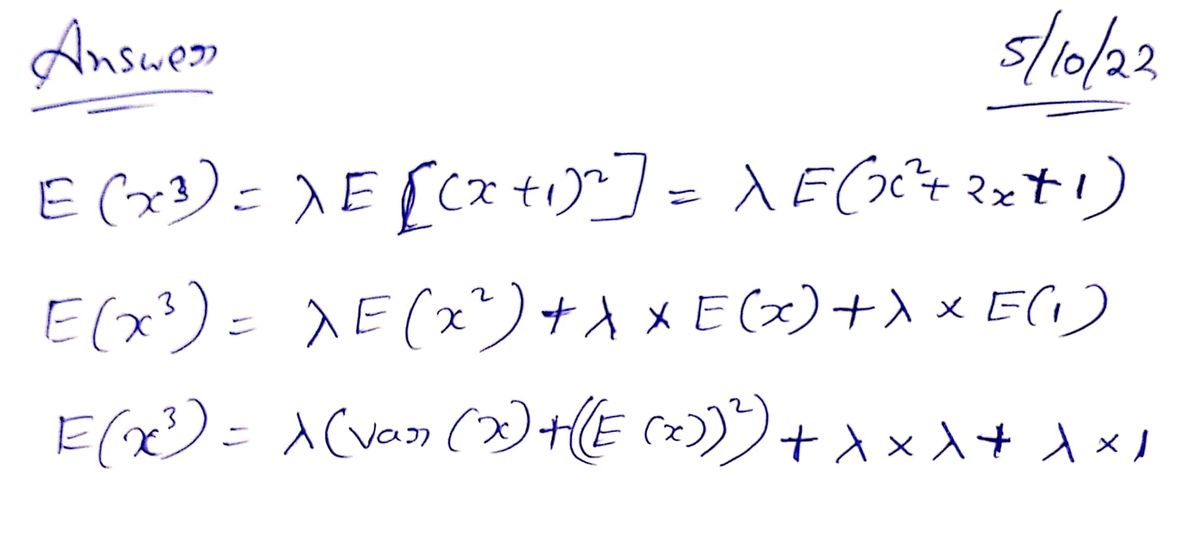4.20. Show that X is a Poisson random variable with parameter 1, then E[X¹] = λE[(X + 1)"−¹] Now use this result to compute E[X³].
4.20. Show that X is a Poisson random variable with parameter 1, then E[X¹] = λE[(X + 1)"−¹] Now use this result to compute E[X³].
A First Course in Probability (10th Edition)
10th Edition
ISBN:9780134753119
Author:Sheldon Ross
Publisher:Sheldon Ross
Chapter1: Combinatorial Analysis
Section: Chapter Questions
Problem 1.1P: a. How many different 7-place license plates are possible if the first 2 places are for letters and...
Related questions
Question
How to solve question 4.20?
![**Transcription for Educational Purposes:**
### Section 4.20
**Problem Statement**: Show that if \( X \) is a Poisson random variable with parameter \( \lambda \), then:
\[
E[X^n] = \lambda E[(X + 1)^{n-1}]
\]
**Instruction**: Now use this result to compute \( E[X^3] \).
### Section 4.21
**Problem Context**: Consider \( n \) coins, each of which independently comes up heads with probability \( p \). Suppose that \( n \) is large and \( p \) is small, and let \( \lambda = np \).](/v2/_next/image?url=https%3A%2F%2Fcontent.bartleby.com%2Fqna-images%2Fquestion%2Fc0618968-6b5a-406b-a92d-661b061825b7%2Fe8053822-8995-4c0d-b83d-cf1a18dec1f6%2F5df8ahd_processed.jpeg&w=3840&q=75)
Transcribed Image Text:**Transcription for Educational Purposes:**
### Section 4.20
**Problem Statement**: Show that if \( X \) is a Poisson random variable with parameter \( \lambda \), then:
\[
E[X^n] = \lambda E[(X + 1)^{n-1}]
\]
**Instruction**: Now use this result to compute \( E[X^3] \).
### Section 4.21
**Problem Context**: Consider \( n \) coins, each of which independently comes up heads with probability \( p \). Suppose that \( n \) is large and \( p \) is small, and let \( \lambda = np \).
Expert Solution
Step 1

Step by step
Solved in 2 steps with 2 images

Recommended textbooks for you

A First Course in Probability (10th Edition)
Probability
ISBN:
9780134753119
Author:
Sheldon Ross
Publisher:
PEARSON


A First Course in Probability (10th Edition)
Probability
ISBN:
9780134753119
Author:
Sheldon Ross
Publisher:
PEARSON
